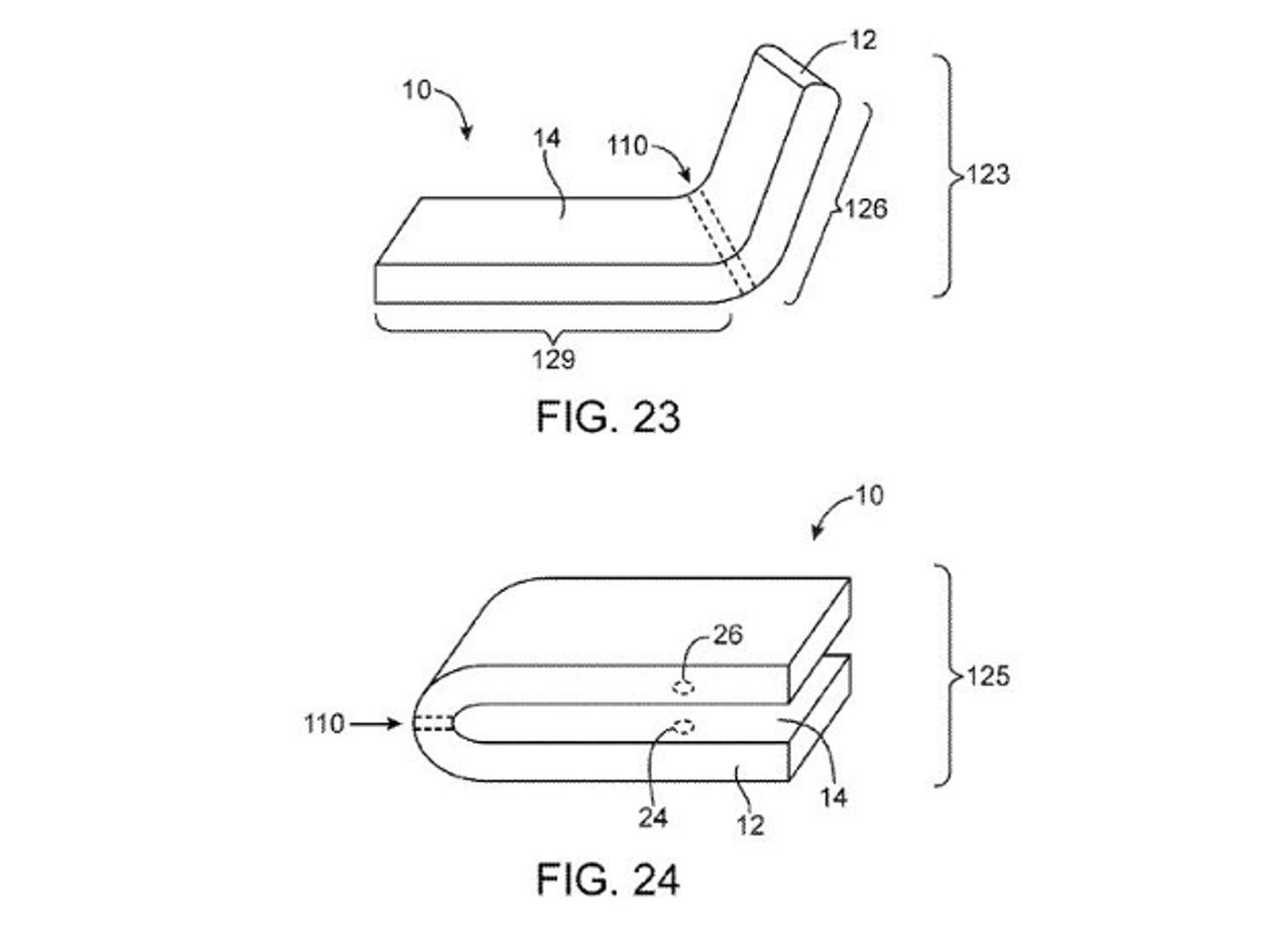Apple patents phone where bending is a feature, not a flaw


That phone doesn't exist today, but Apple has now been granted a US patent for such a device that could see a future iPhone that moves more like a slice of silicon than metal or glass. All Apple needs to do now is figure out how to build it.
Titled 'Flexible electronic devices,' Apple's patent describes a handest whose layered components are flexible and can be fixed into multiple stable positions. The flexible components would include display, battery, circuit boards, and other components that may leave the device with regions of higher flexibility.
Apple served $23.6m bill for infringing old pager patents
What could Apple do with a flexible iPhone? For one, it could avoid another 'Bendgate', since the device would be designed to be "folded for storage (eg in a pocket)". But it could also offer a completely new user interface beyond the touch display and standard features such as sliders and rocker switches. For example, a twist of the device could instruct the phone to switch on or off, answer a call, start an app, change volume, or start playing a song or movie.
Such a phone would also pass Nokia's old drop test with flying colours: as Apple notes in the patent, "rigid electronic devices may be vulnerable to damage in the event of an impact such as a drop of the device on a hard surface."
"Flexible electronic devices may be more resistant to damage during impact events such as drops because the flexible device may bend or deform while absorbing the impact.
"Deformation of this type may increase the duration of an impact thereby reducing the impulse received by other components of the flexible device," it added.
As for materials used to create flexible housing, Apple leaves it fairly open ended, citing "deformable material such as plastic, thin glass, fiber composites, thin metal (eg, aluminum, etc), fabric, silicone, other suitable materials, or a combination of these materials".
The patent may sound familiar as it was noticed when it was first published by the US Patents and Trademark Office in 2013. The idea builds on a long heritage of patents for flexible and curved components dating back to 1978.
Apple has been granted other flexible device patents. One filed in 2011 fuelled rumours that its then under-wraps Watch could be slapped onto the wrist. Another envisioned a display that wrapped around the entire device, and in similar fashion to what Russian smartphone company Yota has done, turn the reverse side of its handsets into screen real-estate.
Read more on Apple's patents